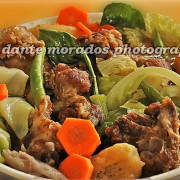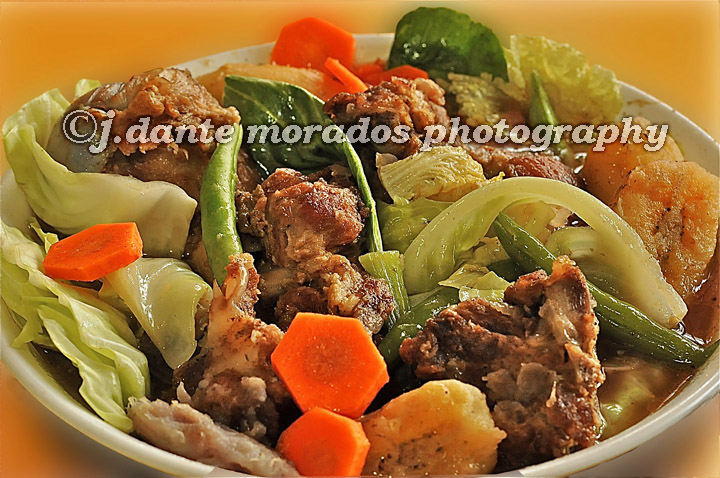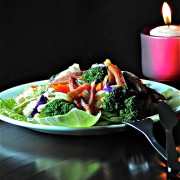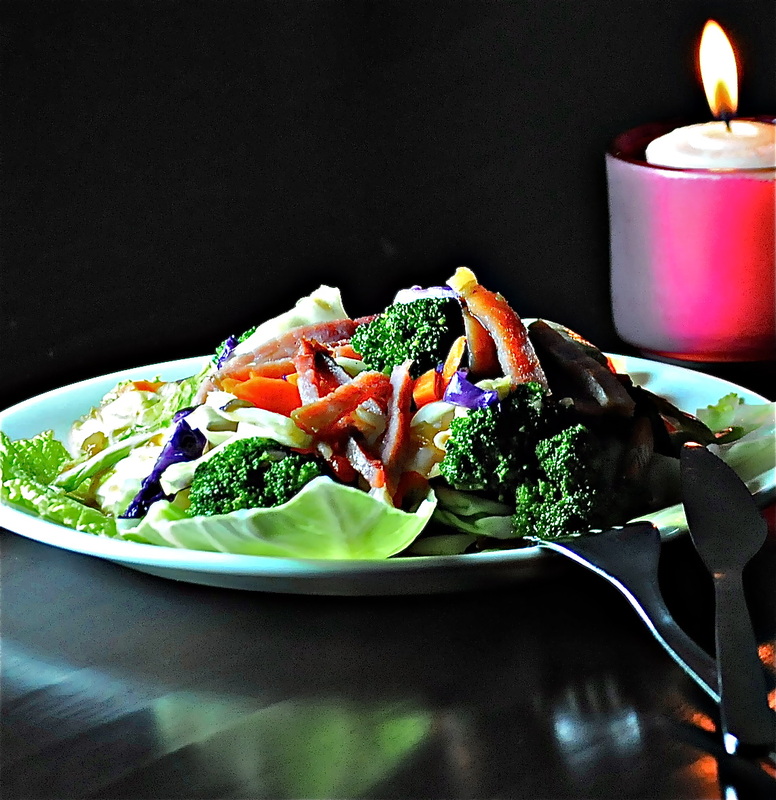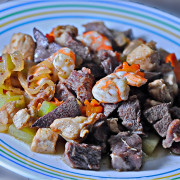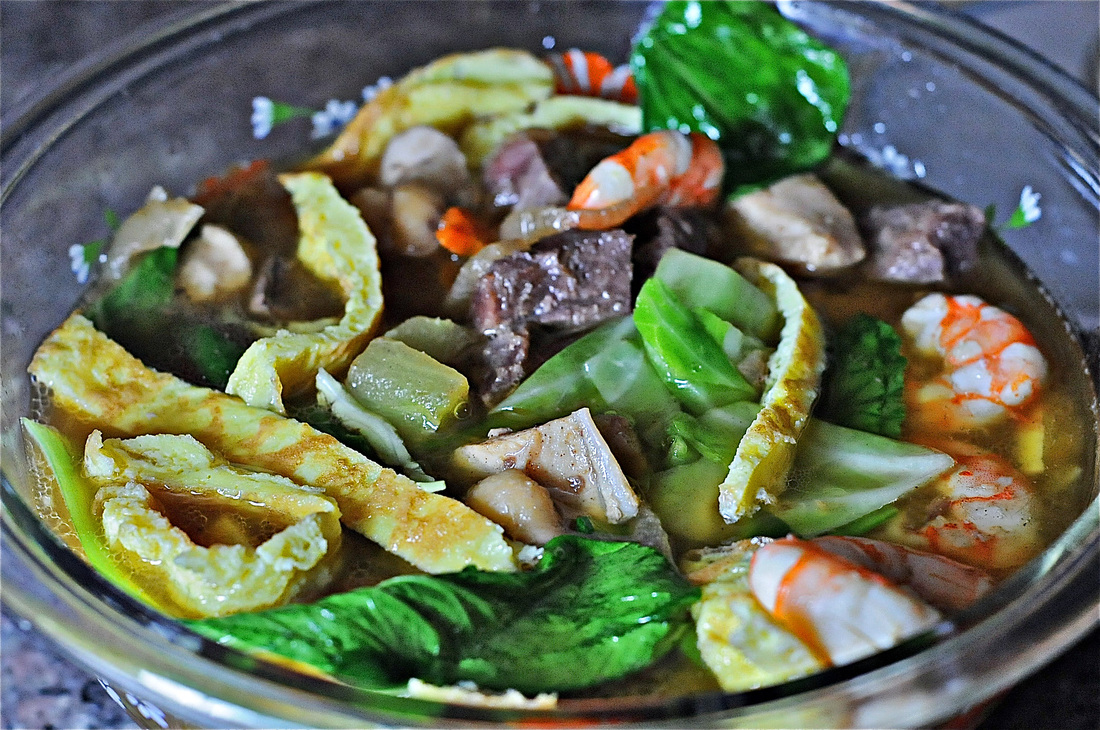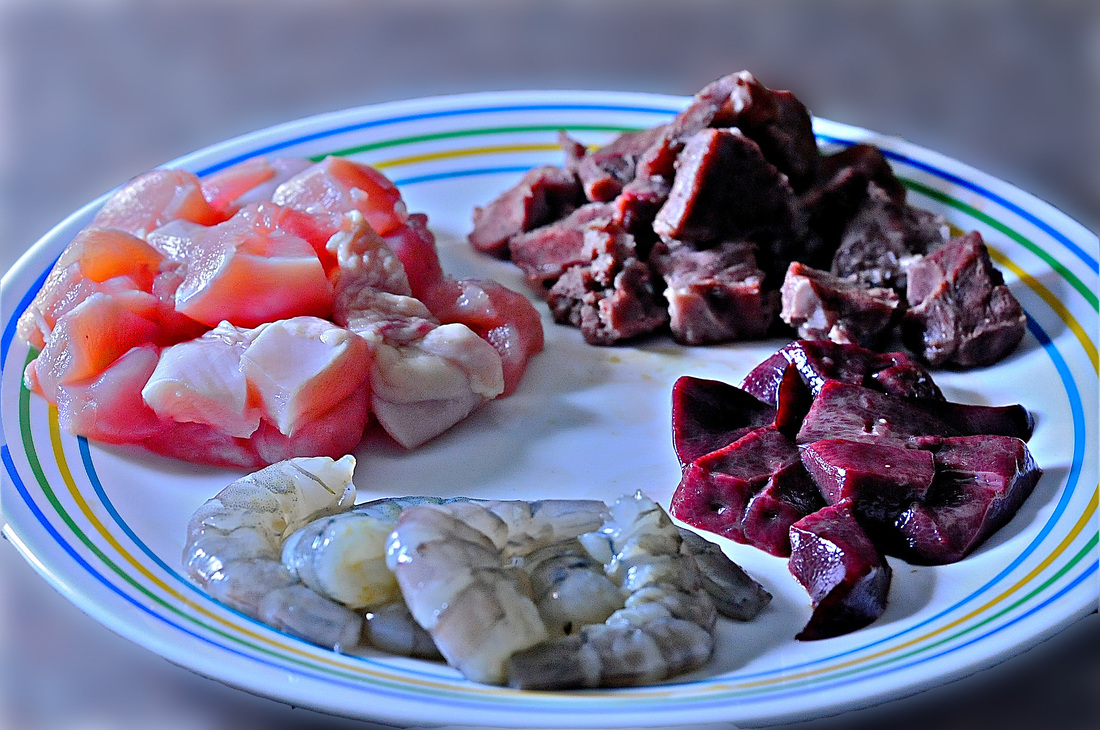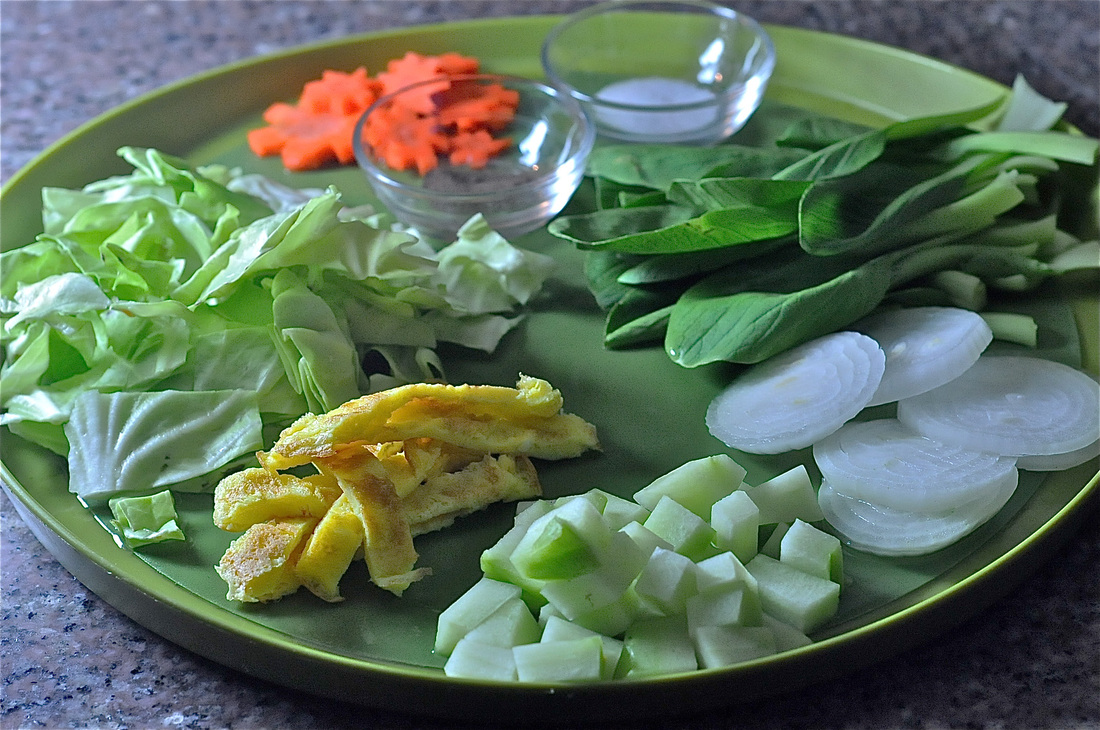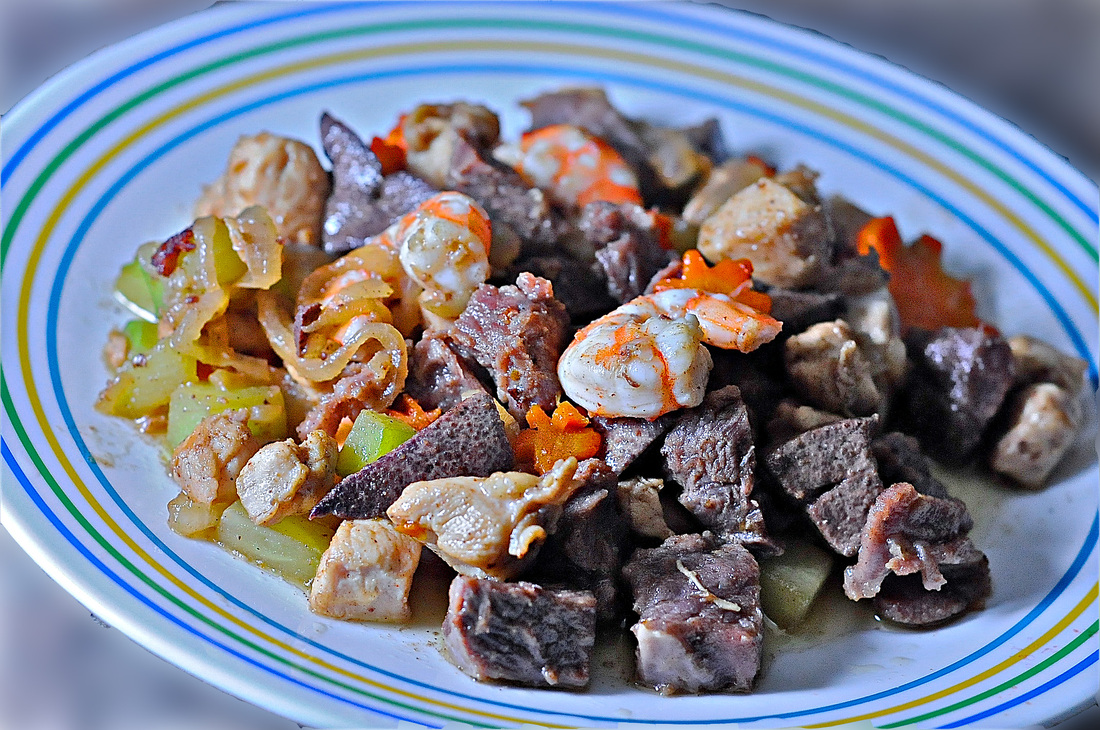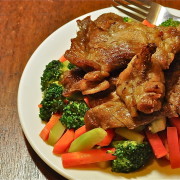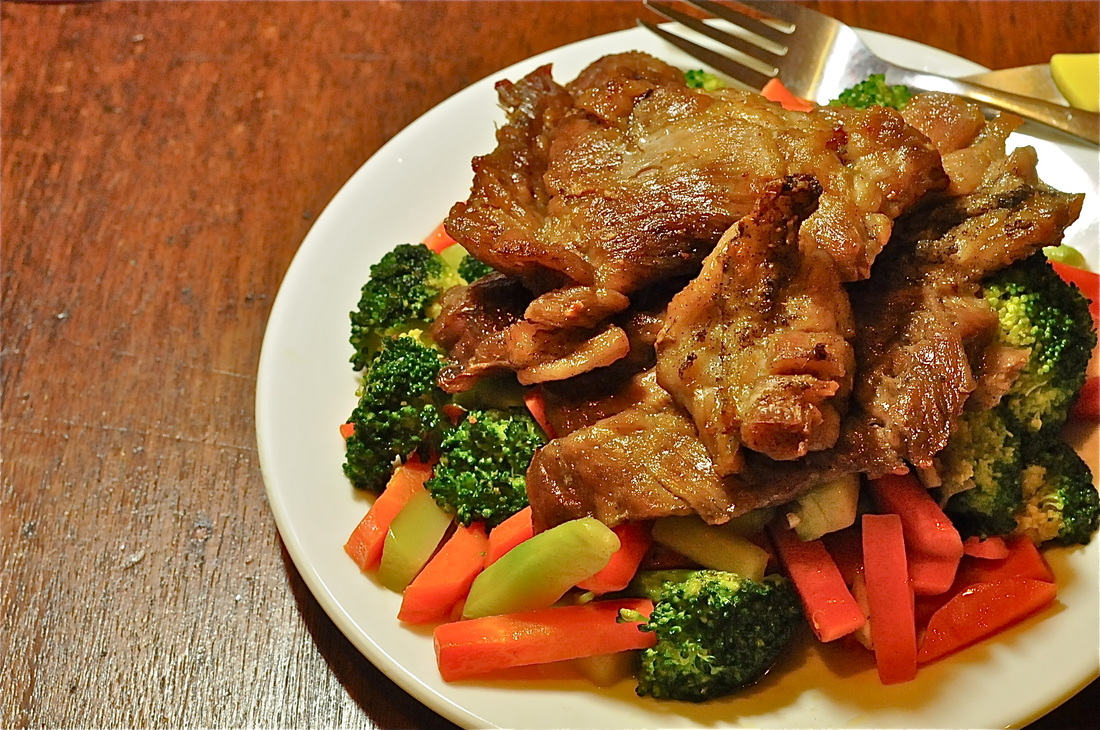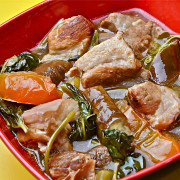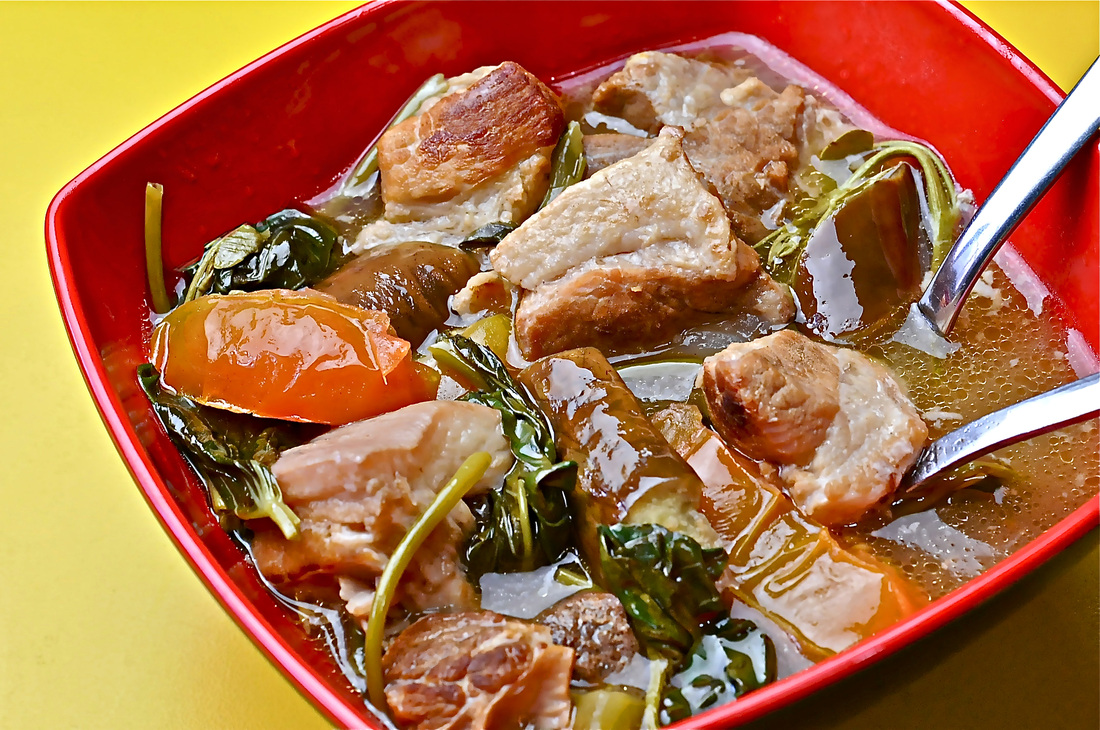BOILAR BONEY-BONEY CON GOOLASH
BOILAR BONEY-BONEY CON GOOLASH
(Filipino: Pinakuluang Buto-Buto Tinambakan ng Gulay)
(English: Boiled Bones Dumped with Veggies)
Start of nationwide classes and everybody’s pockets
are now almost empty.
Tuition fees, miscellaneous needs, uniforms, gadgets & paraphernalia
and allowances drained our once deep money pouch.
Time to create “austere” but mega healthy dish that our “schoolers”
will enjoy for lunch or lay-in center during family talks over dinner.
The cooking method is different in which sequence is hereby
exposed to deliver desired flavor extraction from ingredients.
Get your cleavers (chopping knives) ready.
MEAT:
1 kilo “buto-buto”- chopped
(throw-away bones of pork (or beef) with little lean, cartilage
or tissues still attached)
VEGGIES:
1 small carrot – de skinned & sliced
3 pieces “ripe saging na saba” – de skinned chopped into 2 per piece.
(Cardava Banana or Saba Banana)
3 pieces “kamote” – de-skinned, wedged into 4 per piece
(sweet potatoes)
1 small bunch “bok choy” – cleaned & end joint-stem removed.
(Chinese cabbage, bok choi, pak choi)
1 small bunch of “wom bok – cleamed & end joint-stem removed.
(Chinese Napa cabbage or Baguio pechay)
½ of small cabbage – cut squarely
6-8 pieces Baguio beans – cut into 2 per piece
(or any beans you wish)
SAUTEING SPICES, CONDIMENTS & OTHER NEEDS:
1 medium white onion – sliced
2 grams ground black pepper
20 ml. “patis” (fish sauce)
15 ml. soy sauce
5 grams fine salt
25 ml. EVOO (Extra Virgin Olive Oil)
Tap water
PROCEDURES:
1. With just enough tap water to cover meat, boil “buto-buto”
to desired tenderness. Remove from broth.
Set aside drained meat & broth for later use.
2. Heat EVOO and fry to almost well done state
your bananas & sweet potatoes. Remove from oil & set aside.
3. In the same frying pan, sauté onion till translucent.
4. Add in boiled meat, fried banana & sweet potatoes.
Tumble and mix well for 2 minutes.
5. Add in “patis”, soy sauce, ground black pepper and salt.
Tumble and mix well for 3 minutes to ensure
full flavor absorption by meat.
Add in more EVOO if need be.
6. While on this stage, bring broth to a boil.
7. Once boiling, add in all in raw mats
from the sautéing pan into broth.
Continue boiling for another 2 minutes.
8. Before end of 2 minutes, scoop in 2 pieces each
banana & sweet potato.
Crush to paste consistency and
pour back unto boiling broth.
(this system gives extra flavor & a bit of viscosity to soup.
9. Pour in other veggies. Turn off stove.
Veggies will be half-cooked but nutritively crunchy.
10. Season with additional “patis”
and/or black pepper if so desired.
11. Serve to loved ones a dish
that is so healthy and highly economical.
(Filipino: Pinakuluang Buto-Buto Tinambakan ng Gulay)
(English: Boiled Bones Dumped with Veggies)
Start of nationwide classes and everybody’s pockets
are now almost empty.
Tuition fees, miscellaneous needs, uniforms, gadgets & paraphernalia
and allowances drained our once deep money pouch.
Time to create “austere” but mega healthy dish that our “schoolers”
will enjoy for lunch or lay-in center during family talks over dinner.
The cooking method is different in which sequence is hereby
exposed to deliver desired flavor extraction from ingredients.
Get your cleavers (chopping knives) ready.
MEAT:
1 kilo “buto-buto”- chopped
(throw-away bones of pork (or beef) with little lean, cartilage
or tissues still attached)
VEGGIES:
1 small carrot – de skinned & sliced
3 pieces “ripe saging na saba” – de skinned chopped into 2 per piece.
(Cardava Banana or Saba Banana)
3 pieces “kamote” – de-skinned, wedged into 4 per piece
(sweet potatoes)
1 small bunch “bok choy” – cleaned & end joint-stem removed.
(Chinese cabbage, bok choi, pak choi)
1 small bunch of “wom bok – cleamed & end joint-stem removed.
(Chinese Napa cabbage or Baguio pechay)
½ of small cabbage – cut squarely
6-8 pieces Baguio beans – cut into 2 per piece
(or any beans you wish)
SAUTEING SPICES, CONDIMENTS & OTHER NEEDS:
1 medium white onion – sliced
2 grams ground black pepper
20 ml. “patis” (fish sauce)
15 ml. soy sauce
5 grams fine salt
25 ml. EVOO (Extra Virgin Olive Oil)
Tap water
PROCEDURES:
1. With just enough tap water to cover meat, boil “buto-buto”
to desired tenderness. Remove from broth.
Set aside drained meat & broth for later use.
2. Heat EVOO and fry to almost well done state
your bananas & sweet potatoes. Remove from oil & set aside.
3. In the same frying pan, sauté onion till translucent.
4. Add in boiled meat, fried banana & sweet potatoes.
Tumble and mix well for 2 minutes.
5. Add in “patis”, soy sauce, ground black pepper and salt.
Tumble and mix well for 3 minutes to ensure
full flavor absorption by meat.
Add in more EVOO if need be.
6. While on this stage, bring broth to a boil.
7. Once boiling, add in all in raw mats
from the sautéing pan into broth.
Continue boiling for another 2 minutes.
8. Before end of 2 minutes, scoop in 2 pieces each
banana & sweet potato.
Crush to paste consistency and
pour back unto boiling broth.
(this system gives extra flavor & a bit of viscosity to soup.
9. Pour in other veggies. Turn off stove.
Veggies will be half-cooked but nutritively crunchy.
10. Season with additional “patis”
and/or black pepper if so desired.
11. Serve to loved ones a dish
that is so healthy and highly economical.


